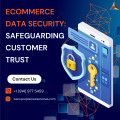In this blog post, we will explore effective strategies and essential tips to help you take your eCommerce store to new heights.
Enhancing User Experience
Streamline Navigation
Simplify your store’s navigation to provide a seamless browsing experience for your customers. Ensure clear and intuitive menus, logical categorization, and a search bar for easy access to products.
Optimize Website Speed
Enhance your website’s loading speed through image optimization, code minimization, and effective caching techniques. Faster loading times enhance user experience and reduce bounce rates.
Mobile Responsiveness
With the rise of mobile browsing, it’s crucial to have a mobile-responsive eCommerce store. Ensure that your store adapts and functions seamlessly on different devices and screen sizes.
Clear Call-to-Actions (CTAs)
Use compelling and visually distinct CTAs to guide visitors through the buying process. Make it easy for customers to add items to their cart, proceed to checkout, and complete their purchase.
Building Trust and Credibility
High-Quality Product Descriptions
Craft detailed and engaging product descriptions that highlight the unique features, benefits, and value of your products. Use persuasive language and provide accurate information to build trust with customers.
Customer Reviews and Testimonials
Display customer reviews and testimonials prominently on your store. Positive feedback helps build credibility and reassures potential buyers about the quality and reliability of your products.
Secure Payment Options
Offer secure payment options and prominently display trusted payment icons. Assure customers that their financial information is safe and protected during the checkout process.
Reliable Customer Support
Provide excellent customer support through various channels, including live chat, email, and phone. Promptly address inquiries, concerns, and issues to build trust and loyalty among your customers.
Optimizing Marketing and Promotion
Targeted Email Marketing
Implement targeted email campaigns to reach out to your existing customer base and potential leads. Personalize emails, offer exclusive promotions, and provide valuable content to nurture relationships and drive sales.
Social Media Engagement
Leverage the power of social media to engage with your audience, build brand awareness, and drive traffic to your eCommerce store. Regularly post engaging content, run targeted ads, and interact with followers.
Influencer Collaborations
Partner with relevant influencers in your industry to promote your products and reach a wider audience. Influencers can provide valuable endorsements and help build trust and credibility for your store.
Search Engine Optimization (SEO)
Optimize your eCommerce store for search engines to improve visibility and organic traffic. Conduct keyword research, optimize meta tags, and create high-quality content to boost your store’s search rankings.
Continuous Improvement and Analysis
Analytics and Performance Tracking
Regularly analyze website analytics to gain insights into customer behavior, conversion rates, and other key metrics. Use this data to identify areas for improvement and make data-driven decisions.
A/B Testing
Conduct A/B tests on different elements of your store, such as landing pages, CTAs, and product displays. Test variations to identify what resonates best with your audience and drives higher conversions.
Customer Feedback and Surveys
Collect feedback from customers through surveys and reviews to understand their needs and preferences better. Use this information to make informed decisions and tailor your store to meet customer expectations.
Competitor Analysis
Monitor and analyze your competitors’ eCommerce stores to identify areas where you can improve and differentiate yourself. Evaluate their pricing, product offerings, marketing strategies, and customer experience to find opportunities for innovation and to stay ahead in the market.
Embracing Personalization
Tailored Recommendations
Implement a recommendation engine that suggests personalized products to customers based on their browsing history and purchase behavior. By offering relevant suggestions, you can enhance the shopping experience and increase cross-selling and upselling opportunities.
Customized User Accounts
Allow customers to create personalized accounts where they can save their preferences, track order history, and receive customized recommendations. This level of personalization fosters a sense of loyalty and encourages repeat purchases.
Dynamic Pricing
Utilize dynamic pricing strategies that adjust prices based on factors such as demand, customer segment, and competitor pricing. This approach allows you to offer personalized pricing to different customer groups and maximize revenue.
Emphasizing Seamless Checkout Process
Simplified Checkout Forms
Optimize your checkout process by reducing the number of form fields and eliminating unnecessary steps. Make it easy for customers to enter their information and complete the purchase quickly, minimizing cart abandonment rates.
Guest Checkout Option
Utilize this data to pinpoint areas for enhancement and make informed decisions based on data analysis. This eliminates barriers to purchase and caters to customers who prefer a quick and hassle-free checkout experience.
Multiple Payment Options
Offer a range of payment choices to accommodate the diverse preferences of your customers. Accept major credit cards, digital wallets, and alternative payment methods to ensure a seamless and convenient checkout process.
Trust Badges and Secure Checkout
Display trust badges, security seals, and SSL certificates prominently during the checkout process to instill confidence in customers. Assure them that their personal and financial information is protected and secure.
Leveraging Data-driven Insights
Customer Segmentation
Segment your customer base based on demographics, behavior, purchase history, and preferences. By understanding different customer segments, you can tailor marketing campaigns, product recommendations, and promotions to specific groups.
Personalized Email Marketing
Utilize data-driven insights to send targeted and personalized email campaigns. Segment your email list and craft tailored messages that resonate with each customer segment, increasing engagement and driving conversions.
Inventory Management and Forecasting
Use data analytics to optimize your inventory management processes. Monitor sales trends, predict demand, and ensure you have the right products in stock to avoid stockouts or overstocking.
Conversion Funnel Analysis
Analyze the different stages of your conversion funnel to identify bottlenecks and areas for improvement. Optimize each step, from initial website visit to final purchase, to increase conversion rates and maximize revenue.
Conclusion
Elevating your eCommerce store from good to great requires a holistic approach that focuses on enhancing user experience, building trust and credibility, optimizing marketing efforts, and continuously improving based on data-driven insights. By implementing these strategies and following the tips outlined in this blog post, you can differentiate yourself from the competition, delight your customers, and achieve sustained success in the dynamic world of eCommerce.
Remember, the journey to greatness is an ongoing process. Continuously monitor your store’s performance, adapt to changing customer expectations, and embrace innovation to stay ahead of the curve. With dedication and a customer-centric mindset, you can elevate your eCommerce store and achieve remarkable growth and profitability.
Elevate your eCommerce store from good to great with Purple Cow’s regular maintenance and upgradation services. Stand out from the competition and unleash the extraordinary. Our expert team will help you enhance user experience, build trust, optimize marketing strategies, and leverage data-driven insights. From streamlined navigation to personalized recommendations, we’ll transform your store into a remarkable online destination. Discover the power of Purple Cow and take your eCommerce success to new heights.














